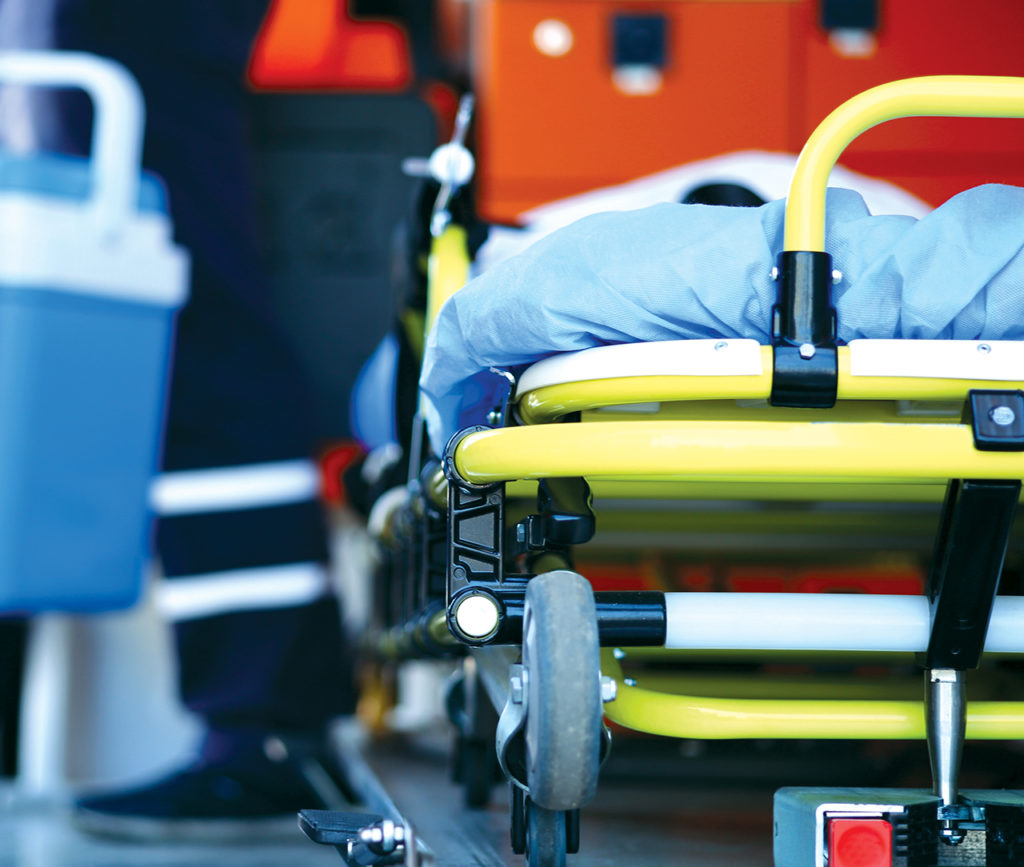About Emergency Preparedness

It’s time to change the way California thinks about disaster response. The COVID-19 pandemic showed that hospitals can quickly mobilize to provide flexible approaches to patient care during a disaster. The state must draw upon these lessons to prepare differently so the next crisis will be less severe. Given California’s size and complexity, the health care disaster response system of the future must be nimble enough to respond to any catastrophe. View more information on hospital disaster preparedness.
Mass Casualty Incident Response for Small Hospitals
2018 Disaster Conference
This session outlines the “15 til 50″ mass casualty incident response methodology, demonstrates how to implement the methodology, and provides an overview of the “15 til 50” toolkit and resources.
When a Health Care Facility Needs Help Evacuating
2018 Disaster Conference
This presentation outlines California’s Public Health and Medical Response System, identifies healthcare facilities’ role in the system, and details best practices and lessons-learned from events.
The Pediatric Black Swan Event: What it is and How to Prepare
2018 Disaster Conference
This presentation defines Pediatric Black Swan Events, and describe lessons learned in real world disasters and their impact on children and families. The session discusses why California may be particularly at high risk for pediatric black swan events, and identifies key preparedness activities to improve resiliency to these events.
Rural Readiness: Preparing, Maintaining and Utilizing MOUs
2018 Disaster Conference
This presentation discusses resource limitations and needs faced by rural hospitals and describes the types of community collaboration that can be useful to filling in resource gaps. The session outlines the importance of proactive planning in preparation for emergency/disaster situations by establishing and maintaining the use of MOUs.
Making the 2018 Statewide Medical and Health Exercise Work for You
2018 Disaster Conference
This session assists hospitals in evaluating their current response concepts, plans, and capabilities related to a medical surge of patients from an emerging infectious disease outbreak in the local community among community health care partners.
Emergency Management Fundamentals
2018 Disaster Conference
This presentation describes the role of an Emergency Management Coordinator and lists their primary responsibilities. The session describes the components of an Emergency Management Program (EMP) and prepares the reader to evaluate an Emergency Operations Plan utilizing the CHA EMP Checklist tool.
The Risks of Readiness
2018 Disaster Conference
This presentation describes the physical, emotional and psychological impacts of crisis preparedness and response, discusses the impact of “perceived threat” on health and well-being, and identifies ways hospital staff and leadership can manage stress and cultivate resilience as they prepare for and recover from crisis and disaster.
Exercises Gone Wrong: When the Exercise Becomes the Disaster
2018 Disaster Conference
This presentation outlines the importance of writing clear, measurable objectives to ensure effective exercises. The session describes three exercise-planning pitfalls that could endanger participants and gives recommend steps hospitals can take to avoid problems.
Ebola Preparations for Hospitals
2018 Disaster Conference
Presented by Cedars-Sinai Health, this presentation outlines the system’s preparations for Ebola response, including preparedness, collaboration, and gives an overview of Cedars-Sinai’s special pathogens program.
Bridging the Gap Between the FBI and the Medical Community
2018 Disaster Conference
This presentation provides background and jurisdictional information on the Federal Bureau of Investigation (FBI) weapons of mass destruction response process, assists hospitals in understanding the CBRNE threat profile, and provides HIPAA considerations during events where the FBI is engaged. It also outlines other FBI response initiatives that are helpful to hospitals in planning and response for threats, offering outreach and training resources hospitals can utilize in engaging the FBI before, during, and after these events.